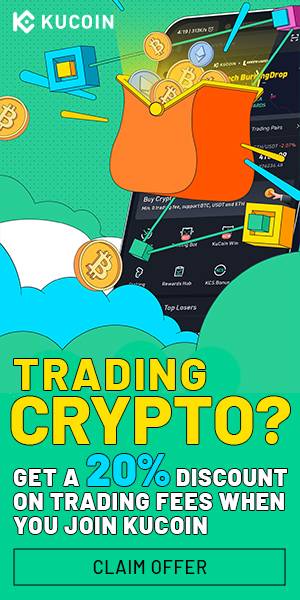The rise of nonfungible token (NFT) marketplaces has ushered in a new era, fundamentally reshaping the way we perceive and interact with digital assets. They provide a new medium for artists to showcase their creations and establish a direct and meaningful connection with their audience. OpenSea has taken center stage in this revolution.
What is OpenSea?
OpenSea, the brainchild of Alex Atallah and Devin Finzer, came into existence in 2017. Their mission was clear: to establish an open and user-friendly marketplace for NFTs. Recognizing the transformative potential of these assets, the founders aimed to provide an NFT platform that would enable creators and collectors to actively engage in the emerging digital ownership economy.
As the popularity of nonfungible tokens (NFTs) soared, OpenSea deftly expanded its horizons to encompass a wider array of blockchain networks and standards. This strategic move allowed the platform to welcome the diverse spectrum of NFT projects that were taking shape, ensuring it could cater to an ever-growing audience. OpenSea’s commitment to embracing interoperability and inclusivity further solidified its reputation as a premier NFT marketplace.
How does OpenSea work?
OpenSea operates as a blockchain-based aggregator marketplace designed for buying, selling and trading NFTs. It functions much like well-known e-commerce platforms such as eBay or Etsy but in a decentralized way.
In parallel to these platforms, OpenSea facilitates transactions between individuals, but with a unique twist: It deals solely with NFTs of various kinds, ranging from art, music, collectibles, virtual lands, sports assets and domain names to utility NFTs like membership passes.
The platform’s distinctive feature lies in its non-custodial approach. Transactions occur through self-executing smart contracts, ensuring a fair and secure exchange. Despite the absence of intermediaries, OpenSea collects a 2.5% fee from all secondary sales, which helps cover the operational costs of the platform.
Apart from supporting the Ethereum standards ERC-721 and ERC-1155, OpenSea has seamlessly incorporated protocols for various other blockchains, including Solana and Polygon, among others.
Thus, due to the often exorbitant transaction fees on the Ethereum network, OpenSea incorporates the Polygon blockchain, a layer-2 scaling solution, enabling swifter and more cost-effective transactions. Transitioning between the Polygon and Ethereum networks on OpenSea is a straightforward process achieved with just a single click of a button. This user-friendly feature is particularly beneficial for newcomers, ensuring a smooth experience.
As for OpenSea’s infrastructure, in 2022, the platform announced a significant overhaul, transitioning from the Wyvern protocol to its newly developed Seaport protocol. The motivation behind this transition was to streamline operations and enhance the marketplace’s efficiency, with the potential to reduce transaction costs substantially on the platform. Additionally, the protocol enhances the legibility and comprehension of wallet signatures, further improving the user experience.
Key features of OpenSea
The OpenSea NFT marketplace boasts a set of distinctive features that underpin its popularity and utility, including minting functionality, transparent transactions and reduced gas fees enabled by layer-2 solutions, personalized storefronts, educational resources, and more.
Key features of OpenSea include:
- Minting functionality: Creators can establish ownership rights and authenticity for their digital creations.
- Transparency: OpenSea’s self-executing smart contracts ensure secure, transparent transactions without intermediaries.
- Multi-blockchain support: OpenSea’s integration with various blockchains improves accessibility beyond Ethereum.
- A wide array of NFT categories: OpenSea covers a broad range of NFT types, such as art, music, collectibles, virtual lands, domains and utility NFTs, appealing to a wide audience.
- User-friendly interface: OpenSea offers an intuitive interface that facilitates easy navigation, caters to all user levels, and simplifies NFT management.
- Customizable storefronts: Creators can personalize storefronts to showcase their NFT collections and enhance branding.
- Community engagement: OpenSea encourages interaction through comments, followings and exploration of trending collections.
- Educational support: OpenSea provides educational resources, helping users navigate NFTs, comprehend gas fees, and make informed choices.
- Ongoing innovation: OpenSea continuously evolves through new features, enhancements and integrations, adapting to the dynamic NFT landscape.
- Inclusivity: OpenSea promotes inclusivity by offering support for multiple languages and diverse content, catering to a global audience.
Pros and cons of OpenSea
When evaluating the pros and cons of OpenSea, certain aspects stand out. On the positive side, OpenSea offers a user-friendly and uncomplicated experience. It’s open to all users without any associated costs.
The platform imposes minimal fees on NFT sales, enhancing its appeal. Additionally, the availability of multiple blockchains provides alternatives in order to circumvent Ethereum’s elevated transaction fees.
However, on the flip side, OpenSea’s exclusive reliance on cryptocurrency for payments might limit accessibility for those accustomed to traditional payment methods. Due to the open nature of the platform, there’s a risk of encountering low-quality or fraudulent NFT listings.
Furthermore, OpenSea lacks comprehensive regulations and a fully decentralized governance model, which could impact its decision-making processes and alignment with decentralized principles.
How to use OpenSea
Before jumping into using OpenSea, there are a few important steps to take to ensure one can make the most of the platform. Newcomers should sign up on the official OpenSea website. Users should ensure that they have an Ethereum wallet, such as MetaMask, ready for seamless interaction. The next step is to choose a compatible wallet and install it as a currency repository for transactions.
Then, users need to fund their wallet and create an OpenSea account by logging in via the “Connect Wallet” tab in the “Menu” section. Ether (ETH) is the primary currency for NFT trading on OpenSea, but Wrapped Ether (wETH) is used within smart contracts for smoother integration. While ETH and wETH are preferred, over 150 other tokens are accepted.

Browse diverse NFT categories using filters and options. Click on an NFT’s name or thumbnail for detailed information about the item, creator and pricing.

Choose “Buy Now” or “Place Bid” based on the listing type. Users need to confirm the transaction through their wallet to complete the ownership transfer.

To mint an NFT, start by creating a listing in your profile’s “Create” section. Upload visuals and details, customize the OpenSea URL, and set price or auction parameters. The next step is to confirm the transaction and mint the NFT.

To cancel a listing, click “Cancel Listing” in the top right of the item’s page. Be aware of associated gas fees, which fluctuate based on network activity.
The future of the NFT marketplaces
In the face of an ever-evolving NFT landscape, OpenSea persists in its journey of evolution and innovation. The platform’s adaptability to new trends and asset categories, along with its commitment to efficiency and community engagement, bodes well for its continued prominence.
As competitors mature, OpenSea faces intensified competition, particularly in terms of activity volume, which has been a defining factor for its success. Despite hurdles, OpenSea is poised to shape the digital ownership realm, leading the way in redefining our interaction with art, commerce and ownership in an era of advancing technology and digital assets.
Collect this article as an NFT to preserve this moment in history and show your support for independent journalism in the crypto space.
Read More: cointelegraph.com









 Bitcoin
Bitcoin  Ethereum
Ethereum  Tether
Tether  Solana
Solana  USDC
USDC  Lido Staked Ether
Lido Staked Ether  XRP
XRP  Dogecoin
Dogecoin  Toncoin
Toncoin  Cardano
Cardano  Shiba Inu
Shiba Inu  Avalanche
Avalanche  TRON
TRON  Wrapped Bitcoin
Wrapped Bitcoin  Bitcoin Cash
Bitcoin Cash  Polkadot
Polkadot  Chainlink
Chainlink  NEAR Protocol
NEAR Protocol  Polygon
Polygon  Litecoin
Litecoin  Internet Computer
Internet Computer  Uniswap
Uniswap  LEO Token
LEO Token  Dai
Dai  First Digital USD
First Digital USD  Ethereum Classic
Ethereum Classic  Hedera
Hedera  Aptos
Aptos  Stacks
Stacks  Mantle
Mantle  Cronos
Cronos  Stellar
Stellar  Cosmos Hub
Cosmos Hub  Filecoin
Filecoin  OKB
OKB  Render
Render  Renzo Restaked ETH
Renzo Restaked ETH  Immutable
Immutable  XT.com
XT.com  Pepe
Pepe  Bittensor
Bittensor  Arbitrum
Arbitrum  Maker
Maker  dogwifhat
dogwifhat  Wrapped eETH
Wrapped eETH  The Graph
The Graph  Optimism
Optimism